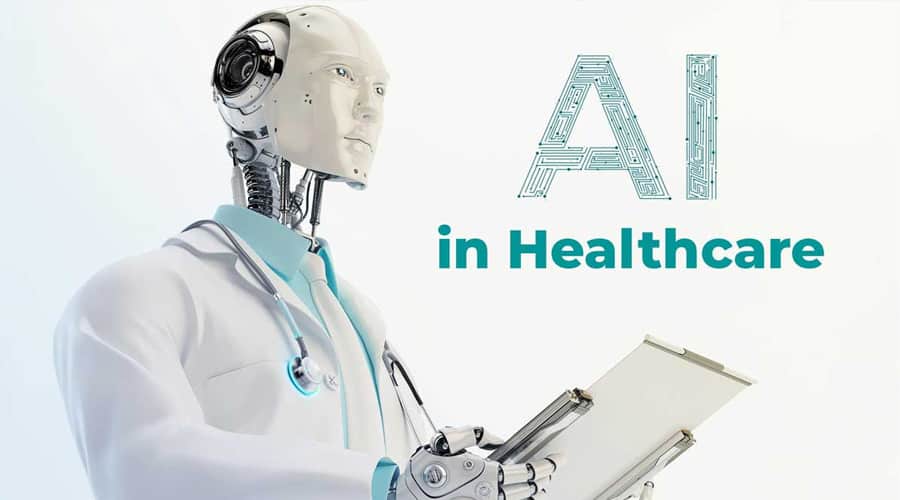I spent the last five years working with hospital administrators, and I can tell you exactly what keeps them up at night. It’s not whether AI will transform healthcare—they already know it will. It’s whether their institution will be ready when it does, or whether they’ll be playing catch-up while competitors pull ahead.
The Unglamorous Reality of Modern Hospitals
Let me paint a picture that’s probably not in any tech conference presentation. It’s 2 PM on a Tuesday at a mid-sized hospital. A radiologist has reviewed 150 chest X-rays since morning. His eyes are tired. He flags a small shadow on one image—probably nothing, but he marks it anyway because that’s what training teaches you. He moves to the next image. Then the next. By 4 PM, he can’t remember if he already reviewed certain films or not.
Meanwhile, in the billing department, someone is manually entering insurance information into a system from 1997. In the lab, results sit in an electronic system that doesn’t talk to the patient’s main chart because they use different software. A cardiologist schedules a follow-up appointment three weeks out because that’s the first open slot, even though the patient might need to be seen sooner.
This isn’t incompetence. This is what happens when you layer decades of technology decisions on top of each other, when regulations make simple changes complicated, and when human beings are asked to do more work than any person reasonably can.
This is where AI actually makes sense to introduce.
What AI Can Actually Do (Not the Marketing Version)
Here’s my honest take on where AI shows real promise in healthcare:
Catching things humans miss through exhaustion. A radiologist reviewing the 200th scan of the day will miss things a fresh radiologist wouldn’t. An AI system doesn’t get tired. It processes images the same way at 8 AM and 8 PM. Studies show that AI detection of certain cancers in imaging is genuinely better than human detection—not because it’s smarter, but because it never gets fatigued.
Connecting dots across fragmented data. If a patient sees three different doctors at three different hospital systems, no single doctor sees the complete picture. A patient might be prescribed two medications that interact poorly because each prescriber is working with incomplete information. An integrated AI system that pulls data from multiple sources can flag these problems. That’s genuinely valuable.
Automating the mindless work. There are tasks in healthcare that don’t require a human decision—they require processing. Scheduling appointments, pre-authorizing insurance claims, flagging duplicate test orders, sending appointment reminders. AI can do these things faster and more accurately than having a person sit at a computer doing data entry.
Helping with early detection. Some health problems give warning signs if you’re looking. Wearable devices can monitor heart rate patterns, blood pressure trends, sleep quality. An AI system analyzing these patterns continuously might flag changes that suggest trouble developing. A person wearing a device might never notice the gradual change that an algorithm immediately spots.
These aren’t sexy applications. They don’t make for great headlines. But they address real inefficiencies that affect patient care.
What AI Actually Struggles With
Because here’s what you need to know: AI in healthcare has genuine limitations that matter.
The data problem is worse than anyone admits. Medical records are inconsistent. One hospital uses “high blood pressure” while another uses different terminology. Lab values mean different things depending on the equipment used. Patient histories contain errors that no one caught. I’ve seen AI systems trained on 100,000 patient records where 15% of the data quality was questionable. Garbage in, garbage out.
Bias is embedded and hard to see. If an AI system is trained on data primarily from one demographic group, it won’t work the same way for everyone else. This isn’t theoretical—researchers have documented cases where AI systems recommend different treatment levels for identical conditions based on patient race or gender. The algorithm isn’t consciously discriminating. The training data is.
Liability and accountability are murky. If an AI system recommends a treatment and the patient has a bad outcome, who’s responsible? The hospital? The software company? The doctor who followed the recommendation? Nobody wants to say “the algorithm made a mistake” in a malpractice lawsuit. The legal framework doesn’t exist yet.
Integration is genuinely hard. Old hospital software systems weren’t designed to talk to AI. Retrofitting them is expensive and complex. Many hospitals are running mission-critical systems from 15 years ago. You can’t just plug in an AI system and expect it to work.
Why Hospitals Are Moving Forward Anyway
Despite these challenges, hospitals are investing in AI. Not because they’re naive about the limitations, but because the alternative is worse. The status quo doesn’t work. Staff burnout is real. Diagnostic errors happen. Patients wait too long. Administrative waste is enormous.
The hospitals that are succeeding with AI aren’t treating it as a magic solution. They’re treating it as a tool that can solve specific problems. One hospital brought in AI for radiology specifically—not for everything, just for images. They trained it carefully on their own data. They paired it with human radiologists rather than replacing them. Over two years, their diagnostic accuracy improved and their radiologists reported less fatigue.
Another hospital system focused on predicting patient deterioration—flagging which admitted patients were likely to have complications. They used AI to analyze vital signs and lab trends. Early warning meant early intervention. Their ICU admissions from the regular ward decreased. Their mortality rates improved.
These aren’t transformational changes that show up on television. They’re incremental improvements to real problems.
The Real Conversation We Should Be Having
When I talk to healthcare leaders, the honest ones say something like this: “We don’t know if AI will solve healthcare. We do know that the current system isn’t sustainable. We’re going to try this carefully, measure results, and adjust.”
That’s the conversation we should be having instead of speculating about AI replacing doctors or solving healthcare through pure technology. The question isn’t whether AI is good or bad. The question is: for this specific problem in this specific hospital, does AI help more than it hurts? Will it improve outcomes? Is it implemented responsibly? Who’s accountable?
Some applications of AI in healthcare will probably fail. Some will succeed beyond expectations. Most will provide modest improvements in specific areas while creating new challenges elsewhere.
What Comes Next
Five years from now, the hospitals that adopted AI thoughtfully will be further ahead. Those that treated it as a silver bullet that could replace clinical judgment will have learned expensive lessons. Those that ignored it entirely will be struggling to keep up with changing patient expectations and staff capabilities.
The future of healthcare isn’t AI or humans. It’s thoughtful integration of both, with clear-eyed understanding of what each can actually do.
The doctors aren’t going anywhere. The radiologists will still be reading images—just faster and more accurately. The administrators will still run hospitals—just with better data to make decisions on. The nurses will still provide care—just with less time wasted on paperwork.
That’s not a revolution. It’s an evolution. And honestly, that might be exactly what healthcare needs right now.



